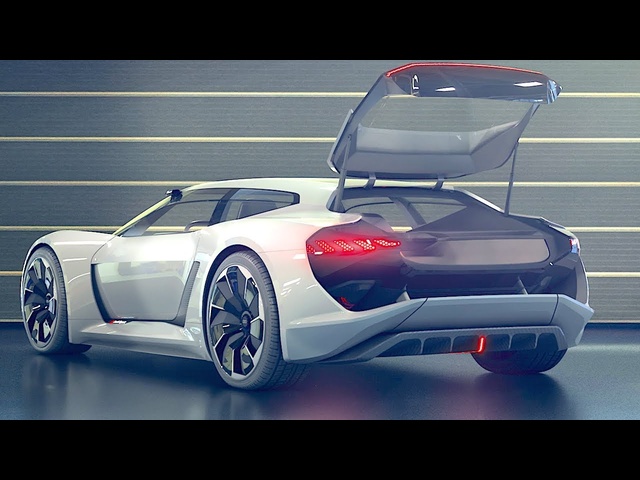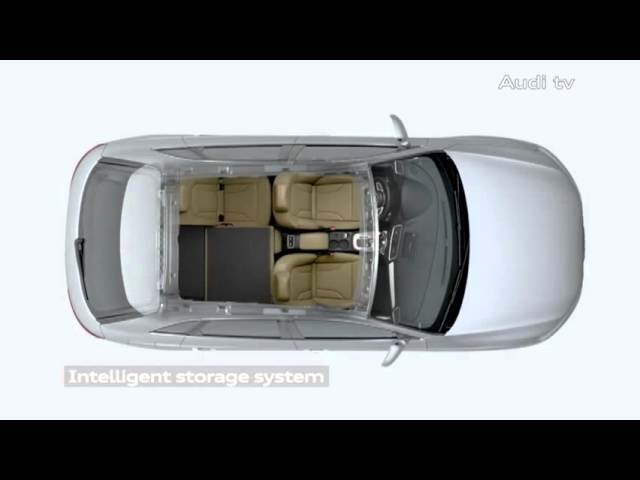Views: 46288
Range Rover Hybrid Diesel HD 2015 Super Test Silk Road Commercial Carjam TV HD 2016
CARJAM TV - Subscribe Here Now http://www.youtube.com/carjamradio
Like Us Now On Facebook: http://www.facebook.com/CarjamTV
For The World's Best Car Videos
Website: http://www.carjamtv.com
Twitter: http://www.twitter.com/carjamtv
Tumblr: http://www.carjamtv.tumblr.com/
Facebook: http://www.facebook.com/CarjamTV
Pinterest: http://www.pinterest.com/carjamtv/carjam-tv/
YouTube: http://www.youtube.com/user/CarjamRadio
LAND ROVER COMPLETES WORLD'S FIRST HYBRID EXPEDITION
ALONG SILK TRAIL FROM SOLIHULL TO MUMBAI
• Three Range Rover Diesel Hybrid prototypes complete 10,472 miles along the Silk Trail from Solihull, home of Land Rover, to Mumbai, home of Jaguar Land Rover's owners, TATA
• Journey covered 53 days, 13 countries and two continents putting the Range Rover Hybrid prototypes through their final extreme engineering sign-off test
• Tested to the limits in temperatures from -10 degrees to 43 degrees Celsius at altitudes of 5500 metres and over every type of terrain
• First foreign-registered cars to drive China's Xinjiang-Tibet highway
• Land Rover's first ever production hybrid deliveries start in the first quarter of 2014 (selected markets only)
Mumbai, 14 October 2013. Three Range Rover Diesel Hybrid prototypes have completed the ultimate engineering sign-off test by traversing 13 countries over 53 days from Solihull, UK, to Mumbai, India. The world's first ever hybrid expedition along the Silk Trail and one of the boldest driving adventures ever pursued by Land Rover.
Hostile conditions on the route included asphalt roads riddled with vast and deep potholes, dusty desert trails in 43°C heat and numerous miles of mud and gravel tracks and cattle trails. In addition, river crossings, passes clinging to the edges of mountains partly blocked by rock falls, the thin air of extremely high altitudes and the dense and erratic traffic of Chinese and Indian roads all added to the test of man and machine.
The Silk Trail 2013 expedition was the final validation test for the Range Rover Hybrid before it is signed-off for production. From the home of the Legend in Solihull, UK, it blazed a trail through France, Belgium, Germany, Poland, Ukraine, Russia, Kazakhstan, Uzbekistan, Kyrgyzstan, China (including Tibet), Nepal and India. For much of this distance the expedition followed the legendary Silk Road trading routes that first connected Asia with Europe more than 2,500 years ago. Overnight halts were made in hotels, hostels and tents at many of the same staging posts visited all those years ago by Silk Road merchants, missionaries and mercenaries.
Where the north and south Silk Roads split, near the remote city of Kashgar in north-western China, the expedition pioneered a mountainous route never previously completed by a vehicle from outside the country and never previously seen in its entirety by any westerner -- the Xinjiang-Tibet highway, which put the new Range Rover Hybrid through its paces at heights of over 5,300 metres above sea level.
Seven consecutive days were spent at altitudes between 11,000 and 17,648 feet (3,350 and 5,379 metres). At such great heights, oxygen content in the air is reduced from the 21 percent found at sea-level to as little as 10 percent, making movement more difficult for humans and internal combustion engines. The Range Rovers continued to make good progress, benefitting from the electric motor's instant torque at 0 rpm and despite being laden with heavy loads including luggage, camping gear, food, medical equipment, and aerodynamically-unfriendly roof-racks carrying spare wheels, tyres and jerry cans of fuel.
Negotiating tracks so sticky with mud that they were impassable to other types of vehicle, the Range Rover hybrid's engine combination -- with a 35kW electric motor supporting the TDV6 3.0 litre turbo-diesel engine -- returned excellent fuel consumption for a vehicle so spacious and powerful. Throughout the epic journey the Range Rover Hybrids typically returned 36 to 37 mpg.
Land Rover development engineers closely monitored data loggers fitted to each car, sending back more than 300 gigabytes of detailed technical records to their engineering team at Gaydon in the UK. The purpose of the expedition was not to test the reliability of mechanical components, which are already proven, but to fine-tune the calibration of engine and transmission software to ensure perfectly seamless performance in all terrains and extreme temperatures and altitudes. Technical setbacks reflected the roughness of the road surfaces: 15 punctures among the expedition's three Range Rover Hybrid and four support vehicles, four wheels damaged by deep potholes, and four windscreens cracked by stones thrown-up on loose surfaces.
Like Us Now On Facebook: http://www.facebook.com/CarjamTV
For The World's Best Car Videos
Website: http://www.carjamtv.com
Twitter: http://www.twitter.com/carjamtv
Tumblr: http://www.carjamtv.tumblr.com/
Facebook: http://www.facebook.com/CarjamTV
Pinterest: http://www.pinterest.com/carjamtv/carjam-tv/
YouTube: http://www.youtube.com/user/CarjamRadio
LAND ROVER COMPLETES WORLD'S FIRST HYBRID EXPEDITION
ALONG SILK TRAIL FROM SOLIHULL TO MUMBAI
• Three Range Rover Diesel Hybrid prototypes complete 10,472 miles along the Silk Trail from Solihull, home of Land Rover, to Mumbai, home of Jaguar Land Rover's owners, TATA
• Journey covered 53 days, 13 countries and two continents putting the Range Rover Hybrid prototypes through their final extreme engineering sign-off test
• Tested to the limits in temperatures from -10 degrees to 43 degrees Celsius at altitudes of 5500 metres and over every type of terrain
• First foreign-registered cars to drive China's Xinjiang-Tibet highway
• Land Rover's first ever production hybrid deliveries start in the first quarter of 2014 (selected markets only)
Mumbai, 14 October 2013. Three Range Rover Diesel Hybrid prototypes have completed the ultimate engineering sign-off test by traversing 13 countries over 53 days from Solihull, UK, to Mumbai, India. The world's first ever hybrid expedition along the Silk Trail and one of the boldest driving adventures ever pursued by Land Rover.
Hostile conditions on the route included asphalt roads riddled with vast and deep potholes, dusty desert trails in 43°C heat and numerous miles of mud and gravel tracks and cattle trails. In addition, river crossings, passes clinging to the edges of mountains partly blocked by rock falls, the thin air of extremely high altitudes and the dense and erratic traffic of Chinese and Indian roads all added to the test of man and machine.
The Silk Trail 2013 expedition was the final validation test for the Range Rover Hybrid before it is signed-off for production. From the home of the Legend in Solihull, UK, it blazed a trail through France, Belgium, Germany, Poland, Ukraine, Russia, Kazakhstan, Uzbekistan, Kyrgyzstan, China (including Tibet), Nepal and India. For much of this distance the expedition followed the legendary Silk Road trading routes that first connected Asia with Europe more than 2,500 years ago. Overnight halts were made in hotels, hostels and tents at many of the same staging posts visited all those years ago by Silk Road merchants, missionaries and mercenaries.
Where the north and south Silk Roads split, near the remote city of Kashgar in north-western China, the expedition pioneered a mountainous route never previously completed by a vehicle from outside the country and never previously seen in its entirety by any westerner -- the Xinjiang-Tibet highway, which put the new Range Rover Hybrid through its paces at heights of over 5,300 metres above sea level.
Seven consecutive days were spent at altitudes between 11,000 and 17,648 feet (3,350 and 5,379 metres). At such great heights, oxygen content in the air is reduced from the 21 percent found at sea-level to as little as 10 percent, making movement more difficult for humans and internal combustion engines. The Range Rovers continued to make good progress, benefitting from the electric motor's instant torque at 0 rpm and despite being laden with heavy loads including luggage, camping gear, food, medical equipment, and aerodynamically-unfriendly roof-racks carrying spare wheels, tyres and jerry cans of fuel.
Negotiating tracks so sticky with mud that they were impassable to other types of vehicle, the Range Rover hybrid's engine combination -- with a 35kW electric motor supporting the TDV6 3.0 litre turbo-diesel engine -- returned excellent fuel consumption for a vehicle so spacious and powerful. Throughout the epic journey the Range Rover Hybrids typically returned 36 to 37 mpg.
Land Rover development engineers closely monitored data loggers fitted to each car, sending back more than 300 gigabytes of detailed technical records to their engineering team at Gaydon in the UK. The purpose of the expedition was not to test the reliability of mechanical components, which are already proven, but to fine-tune the calibration of engine and transmission software to ensure perfectly seamless performance in all terrains and extreme temperatures and altitudes. Technical setbacks reflected the roughness of the road surfaces: 15 punctures among the expedition's three Range Rover Hybrid and four support vehicles, four wheels damaged by deep potholes, and four windscreens cracked by stones thrown-up on loose surfaces.
Make: Rover
More by CARJAM TV
-
 Electric Audi INTERIOR Video PB18 e-tron Audi ...
Electric Audi INTERIOR Video PB18 e-tron Audi ...
 Audi
Views: 5349
Audi
Views: 5349 -
 Audi Q3 2012 SUV Commercial - New Carjam ...
Audi Q3 2012 SUV Commercial - New Carjam ...
 Audi
Views: 14240
Audi
Views: 14240 -
 BMW M6 2013 Gran Coupé Exterior Details ...
BMW M6 2013 Gran Coupé Exterior Details ...
 BMW
Views: 23897
BMW
Views: 23897 -
 Jaguar XF 2013 Sportbrake Launch Commercial ...
Jaguar XF 2013 Sportbrake Launch Commercial ...
 Jaguar
Views: 4974
Jaguar
Views: 4974





